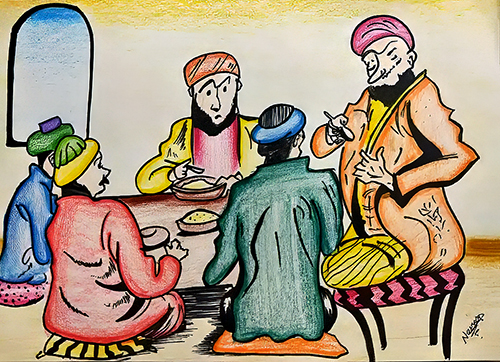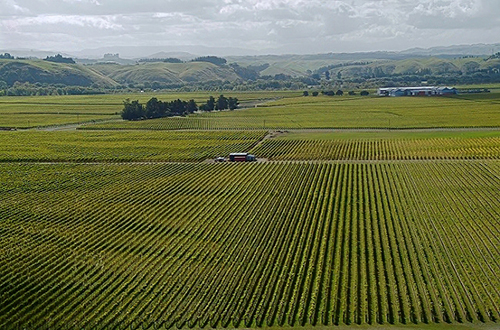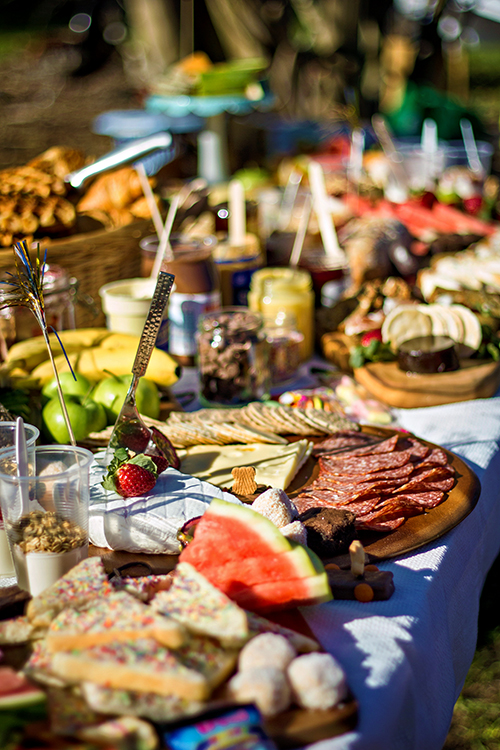
Nasruddin had been working in the fields all day long.
He was tired and sweaty, and his clothes and shoes were covered with mud and stains.
The wealthiest man in town had invited everyone in the village to come to his home that evening for a huge feast.
Nasruddin knew he would be late if he went home to change his clothes before heading into town.
He decided arriving in dirty clothes was better than being late.
As he walked to the wealthy man’s home, Nasruddin imagined the delicious foods he would soon be eating; his stomach began to rumble.
When Nasruddin arrived, the wealthy man opened the door and looked Nasruddin up and down scornfully, from his worn, ragged clothes down to his muddy shoes.
“You can’t come in dressed like that,” the wealthy man exclaimed and shut the door.
Nasruddin hurried home and changed into his finest clothing, including a beautiful coat.
He returned to the wealthy man’s home and to the feast. This time, the host welcomed him with a huge smile.
“Come in, come in,” greeted the host.
As Nasruddin entered, people waved and called to him from all corners of the room as they invited him to sit near them and offered him food.
Nasruddin sat down quietly.
He picked up a plump fig and carefully placed it into a coat pocket.
Next, he took a handful of nuts and put them into the pocket.
Food went into the coat pockets, and when they were filled, Nasruddin began stuffing food into the coat sleeves.
Soon, everyone in the room stared at Nasruddin, wondering what he was doing.
The host hurried over.
“Nasruddin, whatever are you doing?
Why are you feeding your coat in this manner?”
“Well,” replied Nasruddin, “I was not welcome when I first came to this feast in my old farming clothes.
“You shut the door in my face.
“But when I changed into this coat, suddenly, I was greeted warmly.
“So, I realized I was not welcome at this party, but my clothing. And so, I am feeding my coat.”



